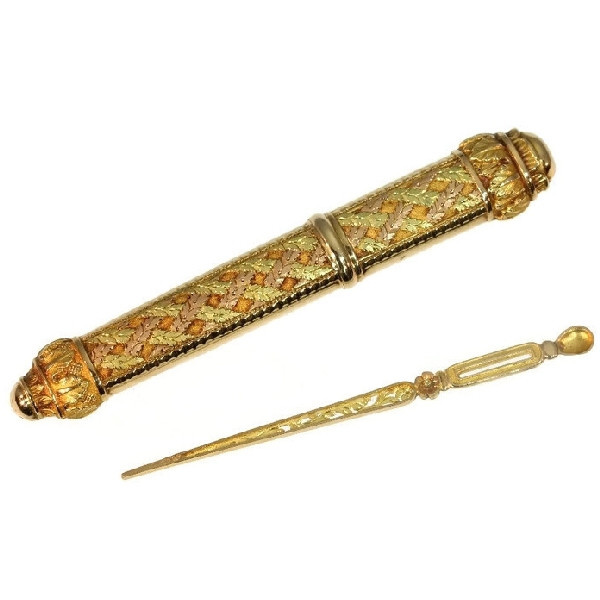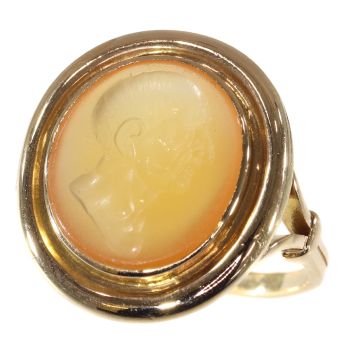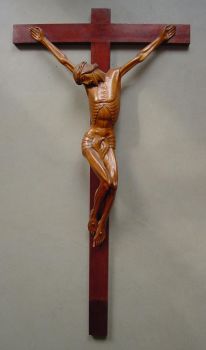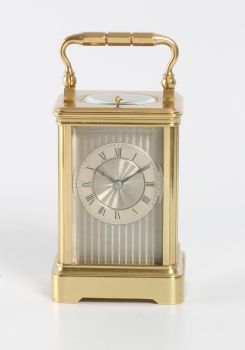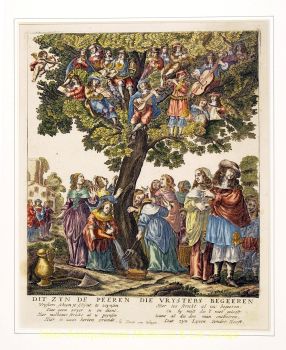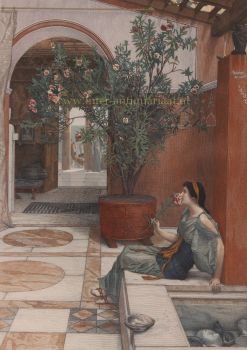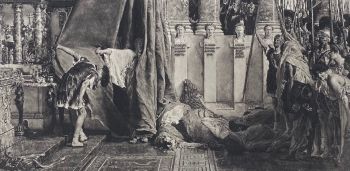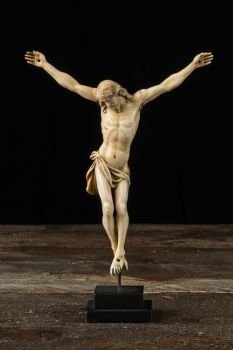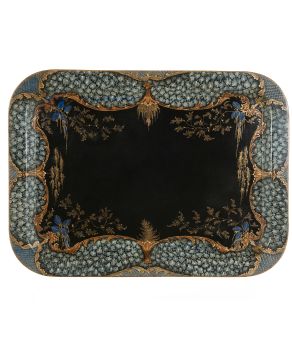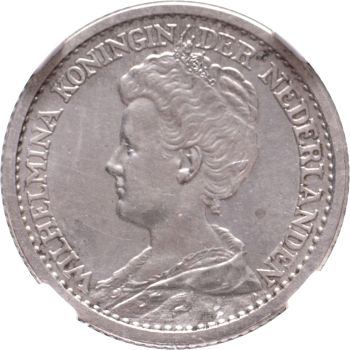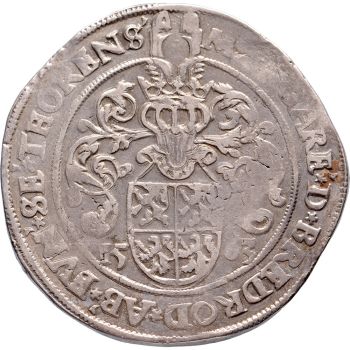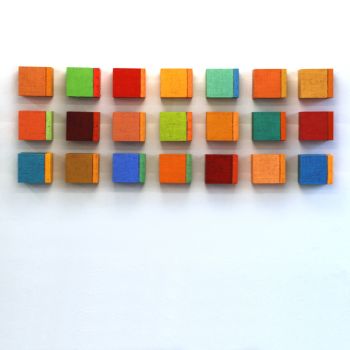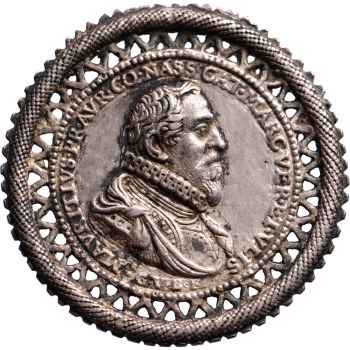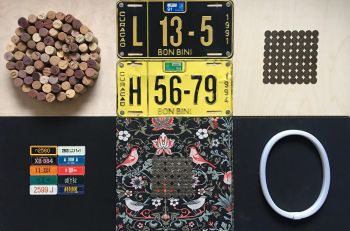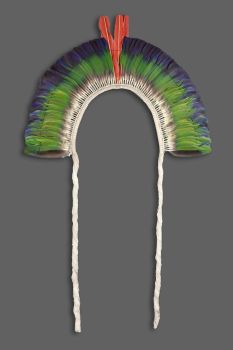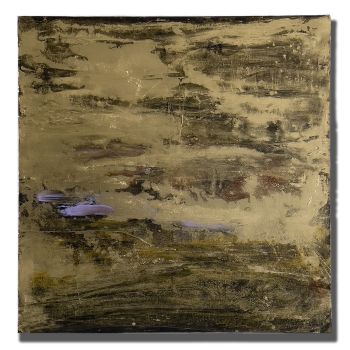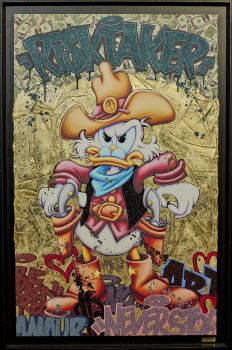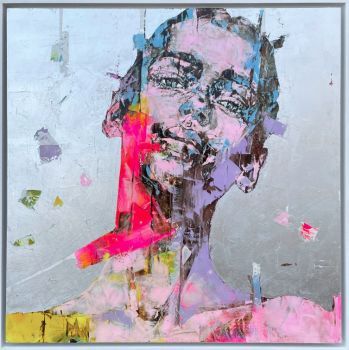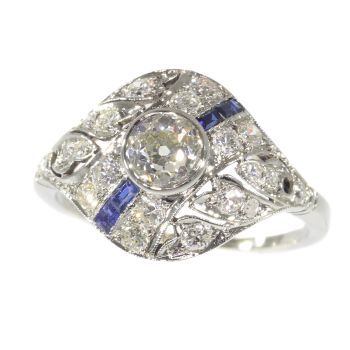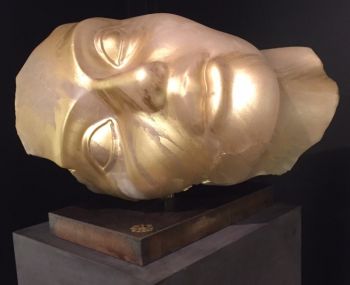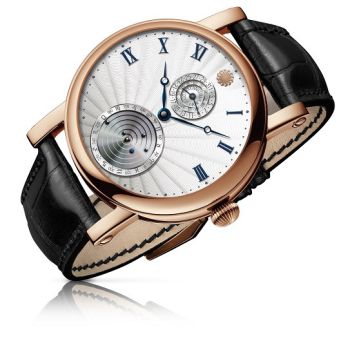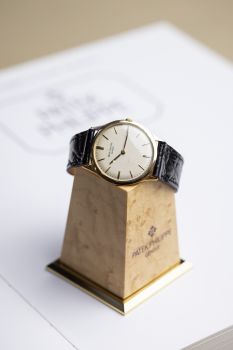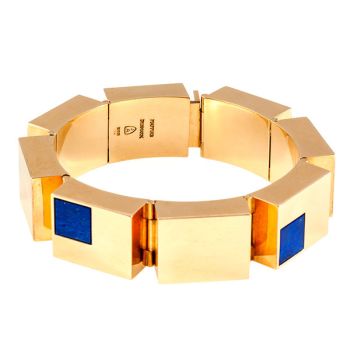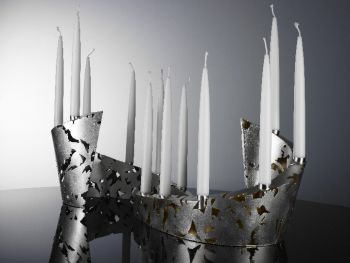Impressionnant étui à aiguilles pré-victorien français en or avec aiguille d'origine 1819
Artiste Inconnu
Or
Actuellement indisponible via Gallerease
- Sur l'oeuvre d'artImpressive gold French pre-Victorian needle case with original needle.
This 18K tri-colour gold French Empire set of sewing utensil from 1819 consists of a needle and its original case. A meticulously pierced bloom grows within a frame from the point of the needle to the flower at the needle eye that is topped with a smallspoon. The outside of the case is bedecked with an overlay of crisscrossing branches in green and red gold on a yellow gold back, while its both ends are all around adorned with acanthus leaves in yellow gold.
Having this stunningly crafted artefact in your possession, it is definitely more of an honour than a hazard to preserve as a fragment of history.Antique jewelry object group: sewing utensils
Country of origin: France
Style: Empire- ( styles overview)
Style specifics: A style that borrowed style specifics from the ancient Greeks and the Roman empire (hence the name of the style: Empire). The empire period represents the second part of the Neo-Classical style, and shows a strong French influence. The style originated in the desire ofto revive the luxurious majesty of imperial Rome. Traditional classical motifs, already seen in the reign of Louis XVI, were supplemented by symbols of imperial grandeur- the emperor's monogram and his emblem, the bee; representations of military trophies; and after the successful campaigns in Egypt, Egyptian motifs. If we had to characterize this style briefly, we could focus on two elementary concepts: massiveness and symmetry.
Period: ca. 1819 (events and facts in 1819)
Source of inspiration: Mother Nature, see also flower symbolism
Theme: wreaths and acanthus leaves
Material: 18K tri-color (red, yellow, green) gold (in France in the 19th Century, goldsmiths used no less then 29 colors of gold!)- ( precious metals)
More background information on: georgian, romanticism, empire, classical jewelry
Hallmarks: The French control mark representing an ram's head that was in use in France from about 1817.- ( general hallmarks info)
Condition: extremely good condition- ( our condition scale)
Dimensions: Length needle case approximately 8.33 cm (3.28 inch), lenght needle approximately 6.75 cm (2.66 inch)
Weight: 10.10 gram (6.49 dwt)
ReferenceNº: 08328-4196
See also our:
pre victorian jewelry, victorian jewelry, sewing utensilsor our latest acquisitions, antique jewelry, estate jewelry, vintage jewelry or modern jewelry
Jewelry with birthstones (or month stones) for:
January - February - March - April - May - June - July
August - September - October - November or December.
Additional information:
jewelry glossary - wall of fame - visit us in Antwerp - subscribe to our mailinglist.
What is antique jewelry? - What is estate jewelry? - What is vintage jewelry? - Sur l'artiste
Il peut arriver qu'un artiste ou un créateur soit inconnu.
Certaines œuvres ne doivent pas être déterminées par qui elles sont faites ou elles sont faites par (un groupe d') artisans. Les exemples sont des statues de l'Antiquité, des meubles, des miroirs ou des signatures qui ne sont pas claires ou lisibles, mais aussi certaines œuvres ne sont pas signées du tout.
Vous pouvez également trouver la description suivante :
•"Attribué à …." A leur avis probablement une oeuvre de l'artiste, au moins en partie
•« Atelier de …. ou « Atelier de » À leur avis, une œuvre exécutée dans l'atelier ou l'atelier de l'artiste, éventuellement sous sa direction
•« Cercle de… ». A leur avis une oeuvre de la période de l'artiste témoignant de son influence, étroitement associée à l'artiste mais pas forcément son élève
•« Style de … ». ou "Suiveur de ...." Selon eux, une œuvre exécutée dans le style de l'artiste mais pas nécessairement par un élève ; peut être contemporain ou presque contemporain
•« Manière de… ». A leur avis une oeuvre dans le style de l'artiste mais d'une date plus tardive
•"Après …." A leur avis une copie (quelle qu'en soit la date) d'une oeuvre de l'artiste
•« Signé… », « Daté… ». ou « Inscrit » À leur avis, l'œuvre a été signée/datée/inscrite par l'artiste. L'ajout d'un point d'interrogation indique un élément de doute
• "Avec signature ….", "Avec date ….", "Avec inscription …." ou "Porte signature/date/inscription" à leur avis la signature/date/inscription a été ajoutée par quelqu'un d'autre que l'artiste
Artwork details
Related artworks
- 1 - 4 / 12
- 1 - 4 / 24
Artiste Inconnu
UNE TÊTE DE PLUME TRIBU JURUNA1900 - 1950
Prix sur demandeZebregs & Röell - Fine Art - Antiques
1 - 4 / 24- 1 - 4 / 24

